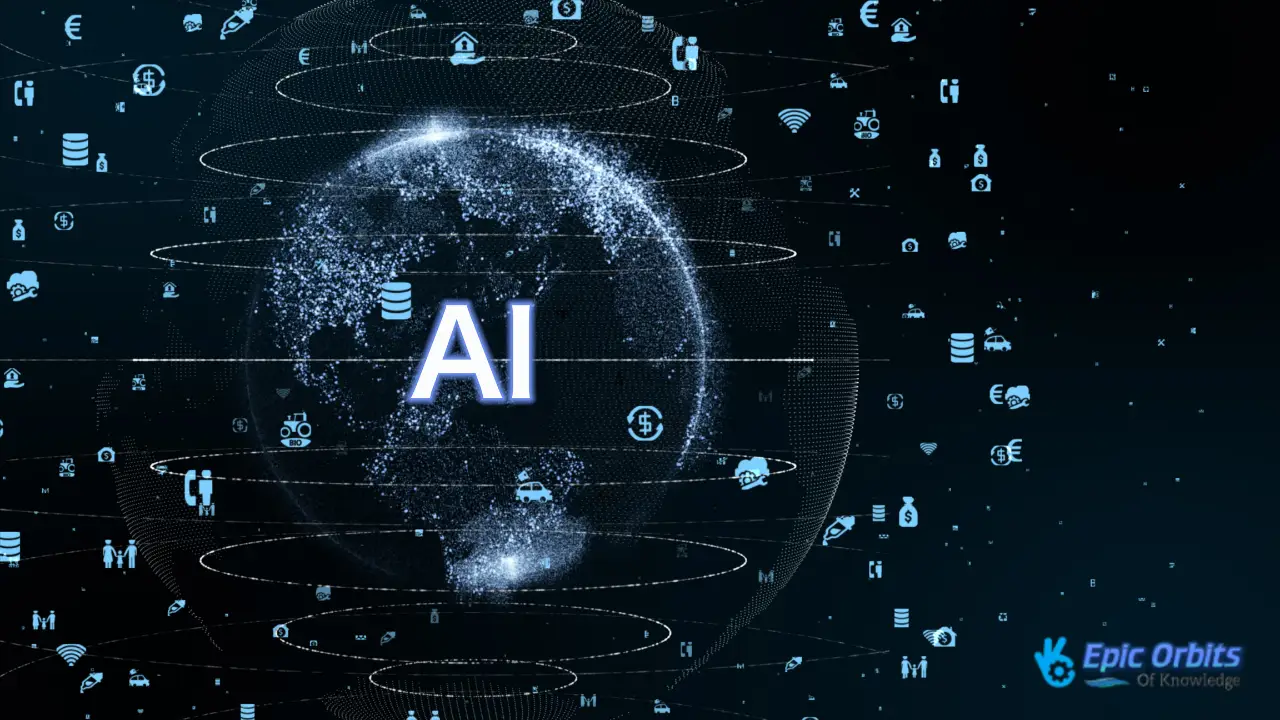AI’s Energy Consumption Impact On Global Resources
AI's energy consumption is rapidly increasing due to the growing demand for deep learning models and data centers.

Given the AI’s energy consumption, one may wonder if striking a balance between environmental conservation and AI advancement is possible. Considering the worldwide influence of AI energy usage, it is crucial, given that AI energy doubled every 100 days when ChatGPT started in November 2022.
Our earth suffers greatly from the quick increase of artificial intelligence energy consumption. In 2023, data centers used 1–1.5% of world energy. Address the environmental problems brought forth by artificial intelligence’s energy use. This year the International Organization for Standardization intends to publish criteria for “sustainable A.I.” Their goal is to minimize how negatively artificial intelligence affects the surroundings.
Knowing AI’s energy consumption in modern society helps one to better grasp it.
From self-driving vehicles to virtual assistants, artificial intelligence permeates our lives today. But the need for artificial intelligence has increased our energy consumption. Reducing artificial intelligence’s carbon impact helps us to save our earth. Sustainable AI technologies enable the running of AI systems to use less energy.
By 2027, artificial intelligence might use 0.5% of the global power consumption, which is alarming. Thanks mostly to artificial intelligence, data centers might use 3 to 4 percent of world energy by 2030. One picture created with an artificial intelligence may use as much energy as charging a smartphone.
Leading artificial intelligence firms are striving for greater sustainability and energy economy. Google is developing renewable energy-run data centers starting in 2027. Microsoft and Amazon, for their part, aim to be carbon neutral by 2030 and 2040, respectively. These steps are crucial in raising the environmental friendliness of artificial intelligence.
Growing demand for artificial intelligence indicates increased energy consumption is involved. ChatGPT needs plenty of power and energy as it processes over one billion searches per day. Companies like Nvidia, however, are producing energy-saving CPUs. With 25 times less energy and 30 times greater performance, these processors can do artificial intelligence chores.
AI’s energy consumption: Carbon Footprint of Large Language Models Training
Large language models such as ChatGPT learn using a lot of data and computations. This method has a substantial carbon impact. Making one artificial intelligence model may produce more than 626,000 pounds of CO₂, according to studies. That is equivalent to the emissions from five automobiles running their whole lifetimes.
GPT-3 emits approximately 50 pounds of CO₂ each day. This totals around 8.4 tons of CO₂ annually. This number indicates that we must figure out how to reduce the negative effects of artificial intelligence on the surroundings.
Some noteworthy information on the carbon footprint of artificial intelligence consists of
- Two to three percent of global greenhouse gas emissions come from worldwide data centers.
- Training GPT-3, which uses 175 billion parameters, consumed 1,287 MWh of power. It additionally generated 502 metric tons of CO₂ emissions.
- One question using ChatGPT requires 100 times more energy than a Google search.
For artificial intelligence, developers are designing fresh hardware and chipsets. Their main concentration is on energy economy. These improvements could drastically cut the power consumption. Like compute-in-memory, new technologies seek to process data quicker using less energy.
Different AI models have significant carbon footprints. GPT-3 generates approximately 502 metric tons of CO₂, which is equivalent to the emissions of 112 gasoline-powered cars. A single AI model can produce around 626,000 pounds of CO₂, comparable to the emissions of five cars over their lifetimes.
Data centers: AI systems’ power-hungry backbone
Key to artificial intelligence systems as they handle calculations and data storage are data centers. Still, their substantial energy consumption results in significant environmental costs. Making artificial intelligence greener will help reduce energy consumption.
Data centers now occupy more space and use more electricity. In ten years, they have developed from thirty MW to 500 MW to 2 GW. Reaching over 3,000 MW, the building of new data centers has also doubled since 2019. Such growth emphasizes the requirement of green practices as well as the speed of expansion of the data center sector.
Businesses want to increase the energy efficiency of data centers. They are implementing renewable energy sources, along with enhanced hardware and software solutions. This strategy helps the earth and lets data centers use less energy.
AI’s energy consumption: Methods of Measurement
Tracking AI’s energy use will help it to be more environmentally friendly. This implies monitoring the use of electricity by your data centers and artificial intelligence systems. As big firms like Microsoft and Google have grown their data centers, their carbon footprint has grown as well.
Consider these numbers when gauging the energy consumption of artificial intelligence:
- By 2030, artificial intelligence models might cause data centers to use up to 21% of the global power.
- GPT-3 training’s GPUs ran on around 1,300 megawatt-hours of power. That is the monthly power consumption of around 1,450 American households.
- Based on the model, restricting GPU power may save between 12% and 15% of the total energy consumption.
Try these ways to help artificial intelligence be more environmentally friendly:
- GPU power caps may assist in conserving energy.
- Choose hardware with carbon efficiency.
For BERT training, restricting GPU power at 150 watts, for instance, adds two hours to the procedure. For one U.S. house, this saved enough energy for a week. Using these techniques will benefit the earth and reduce the carbon footprint of businesses.
AI’s energy consumption: Green Computing Solutions for Applications
Green computing technologies are developing to reduce the environmental effect of artificial intelligence. These seek to reduce the carbon footprint of AI systems, thereby increasing their environmental friendliness. One of the priorities is specialized, low-energy-consuming chips.
Leading in this field with processors using up to 25 times less energy is Nvidia. This is crucial as data centers—key to artificial intelligence—emit many greenhouse emissions. Energy-efficient processors encourage green practices and assist in lowering the carbon footprint of artificial intelligence.
Another crucial aspect of green computing is the optimization of software. It uses less power in artificial intelligence algorithms and tools. Methods such as quantization and model pruning assist in getting this. Alternatives to cloud computing also provide a greener approach to executing artificial intelligence applications; therefore, they reduce energy consumption.
Furthermore, cloud computing options such as serverless and edge computing help reduce AI’s energy consumption. They help maximize resources, lowering the need for large data centers. Green computing technologies will help us to make artificial intelligence more sustainable and energy-efficient for future generations.
AI’s energy consumption: Ecological Approaches for Development of AI
We have to consider how artificial intelligence affects the surroundings as it develops. Growing energy consumption in artificial intelligence is influencing our world. Businesses may create environmentally friendly artificial intelligence solutions.
They may help to reduce the carbon footprint of artificial intelligence by advocating environmentally friendly methods. New artificial intelligence chip designs, for instance, use less heat and electricity. Furthermore, under construction are solar panel-powered data centers meant to conserve electricity.
The following important figures underline the relevance of sustainable practices for the growth of artificial intelligence:
- By 2035, 2,142 zettabytes are expected to be created overall.
- Equivalent to the energy used by 130 American houses annually, training generative AI models such as ChatGPT-3 requires around 1,300 megawatt-hours (MWh) of power.
- By 2027, NVIDIA is expected to ship 1.5 million AI server units, using at least 85.4 terawatt-hours of power yearly.
Using sustainable methods helps businesses cut the energy consumption of artificial intelligence. This facilitates the environmental friendliness of our future.
Some companies are adopting sustainable practices to reduce their environmental impact. Hanwha operates eco-friendly data centers with solar panels, which helps reduce power consumption. NVIDIA focuses on energy-efficient AI chip designs, resulting in lower power consumption.
Renewable Energy’s Place in AI Operations
The planet’s transition to a greener future necessitates reducing AI’s carbon impact. Top names like Google, Microsoft, and Amazon lead first. Their artificial intelligence systems run on renewable energy. Google is developing data centers, for instance, operated by solar and wind energy.
Making artificial intelligence systems more environmentally friendly depends critically on using solar and wind energy. These techniques enable businesses to use fewer fossil fuels and release fewer greenhouse emissions. This action not only addresses climate change but also lowers the environmental damage caused by AI.
- Funding solar-powered artificial intelligence projects.
- Businesses can incorporate wind power into their daily operations.
- Creating hybrid energy solutions combining many renewable energy sources.
Choosing these routes can help businesses drastically reduce their carbon impact. This is essential, as the need for artificial intelligence is growing. We have to concentrate on lowering the carbon footprint of artificial intelligence to ensure its advantages exceed any negative effects on the environment.
Novel Ideas in Energy-Efficient Artificial Intelligence
Artificial intelligence is soon becoming indispensable. We therefore need sustainable artificial intelligence technology more than ever. Reducing the environmental effect of artificial intelligence depends on energy-efficient AI algorithms. Studies reveal that new hardware technology is essential; businesses such as Nvidia create CPUs using 25 times less energy.
Imagine artificial intelligence systems with a low carbon footprint operating on renewable energy. Researchers and developers are precisely focused on this goal. They are striving to increase AI energy efficiency.
Quantum computing might permanently alter artificial intelligence. It speeds up and increases the efficiency of data processing. AI might be able to do presently difficult or very energy-hungry jobs using quantum computing.
An additional fascinating field is neuromorphic computing. It strives to resemble the human brain. AI may therefore learn and adapt more sustainably and effectively.
Reduced energy usage, reduced expenditures, and fewer carbon emissions are among the advantages of sustainable artificial intelligence technologies. AI demand rises and calls on us to develop energy-efficient algorithms. These should satisfy the need for respect for the environment.
Financial gains from using energy-efficient artificial intelligence
Developing new artificial intelligence technologies shouldn’t damage our globe. In artificial intelligence, green computing lets businesses run better and save costs. AI can, for instance, forecast when machines require maintenance, therefore saving money by preventing unneeded pauses.
Some fascinating facts are:
- Forecasts of a $300 billion global GDP increase from artificial intelligence in the energy industry by 2030
- Anticipated decrease in greenhouse gas emissions brought on by artificial intelligence: 1.5 Gt of CO₂e by 2030
- By 2030, projections indicate that artificial intelligence will have a cumulative economic influence of $15.7 trillion in the energy sector.
New processors in development by NVIDIA will let AI run on less energy. To use less power, artificial intelligence may also employ techniques such as quantization and pruning. Computers need less energy; this is implied as well.
Green computing in artificial intelligence lets businesses preserve the earth and money. Moving increasingly online means that a green future depends on adopting energy-efficient artificial intelligence.
Economic and environmental projections vary across regions. North America is expected to see a GDP growth of 4.2% alongside a 6.1% reduction in greenhouse gas emissions. Europe is projected to experience 5.4% GDP growth with a 4.9% decrease in emissions. East Asia is anticipated to achieve 5.1% GDP growth and a 4.8% reduction in greenhouse gas emissions.
Conclusion
The swift advancement of artificial intelligence brings us to a pivotal moment. We need to consider how artificial intelligence impacts our planet. From maintaining data centers to training massive language models, artificial intelligence systems have enormous energy requirements. Such usage significantly increases our carbon footprint.
Still, this issue also presents an opportunity for environmentalism. Big digital firms like Google, Microsoft, and Amazon are striving for carbon neutrality. They recognize the importance of reducing the energy consumption of artificial intelligence by using environmentally friendly AI methods. The International Organization for Standardization will shortly define criteria for sustainable artificial intelligence.
Green computing and renewable energy help us improve artificial intelligence on our planet. We can create sustainable and highly effective artificial intelligence. It’s time for a shift to balance environmental care with AI’s expansion.



